Frost Protection - UTL Repository
Frost Protection - UTL Repository
Frost Protection - UTL Repository
Create successful ePaper yourself
Turn your PDF publications into a flip-book with our unique Google optimized e-Paper software.
]<br />
F R O S T P R O T E C T I O N : F U N D A M E N T A L S , P R A C T I C E A N D E C O N O M I C S<br />
[<br />
Radiation<br />
Electromagnetic radiation is energy transfer resulting from oscillation of electric<br />
and magnetic fields. A good example is sunlight or solar radiation, which<br />
transfers huge amounts of energy to the Earth’s surface. Most of the distance<br />
between the Sun and Earth is a vacuum (i.e. empty space), so one property of<br />
radiation is that the heat transfer occurs even through a vacuum. Although much<br />
cooler, objects on Earth also radiate energy to their surroundings, but the energy<br />
content of the radiation is considerably less. The energy radiated from an object<br />
is a function of the fourth power of the absolute temperature:<br />
E′<br />
= ε σ<br />
4<br />
T<br />
K<br />
W m -2 Eq. 3.15<br />
where ε is the emissivity (i.e. the fraction of maximum possible energy emitted<br />
at a particular temperature); σ =5.67 × 10 -8 W m -2 K -4 , the Stefan-Boltzmann<br />
constant; and T K is the absolute temperature (T K = T a + 273.15). Assuming that<br />
ε = 1.0, the radiation flux density from the surface of the sun at 6000 K is about<br />
73,483,200 W m -2 , whereas radiation from the surface of the Earth at about 288<br />
K is approximately 390 W m -2 . However, because irradiance (i.e. radiation flux<br />
density in W m -2 ) that is received by a surface decreases with the square of the<br />
distance from the Sun and the mean distance between the Earth and Sun is<br />
about 150 660 000 km, the solar energy has reduced to about the solar constant<br />
(G sc = 1367 W m -2 ) by the time it reaches the upper atmosphere of the Earth.<br />
As the radiation passes through the atmosphere, some is reflected and some is<br />
absorbed, so, on a clear day, only about 75 percent of solar radiation reaches the<br />
surface. Because the earth receives solar energy on a surface area (πr 2 ) of a disk<br />
perpendicular to the sun’s rays with a radius (r) the same as the earth but it emits<br />
from a surface area of a sphere (4πr 2 ), the input and output of radiant energy are<br />
in balance and the Earth’s temperature is relatively stable.<br />
Radiant energy can be described in terms of wavelength of the radiation.<br />
Bodies with higher temperature emit shorter wavelengths of the electromagnetic<br />
energy. Energy emitted by a perfect emitter at 6000 K falls within the range of<br />
0.15 to 4.0 µm, where 1.0 µm = 1.0 × 10 -6 m. Much of the high-energy (short<br />
wavelength) radiation is absorbed or reflected as it passes through the<br />
atmosphere, so solar radiation received at the Earth’s surface mostly falls in<br />
wavelength range between 0.3 to 4.0 µm. The wavelength of maximum emission<br />
(λ max ) is calculated using Wein’s displacement law as:<br />
2897<br />
λ max = µm Eq. 3.16<br />
T K<br />
60


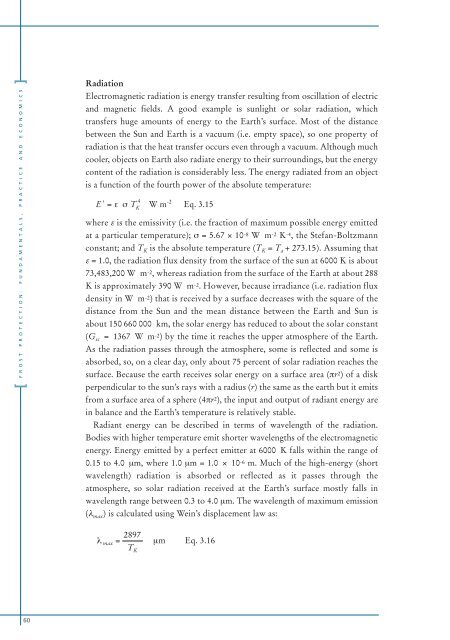
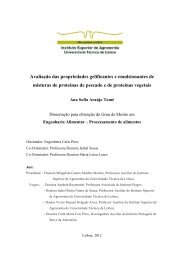


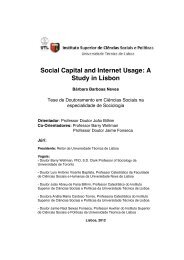
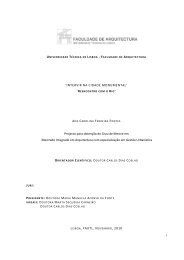
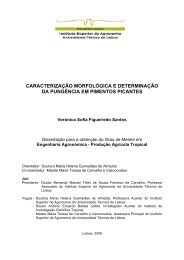



![Tese - Es..[1].pdf - UTL Repository - Universidade Técnica de Lisboa](https://img.yumpu.com/25707135/1/184x260/tese-es1pdf-utl-repository-universidade-taccnica-de-lisboa.jpg?quality=85)


